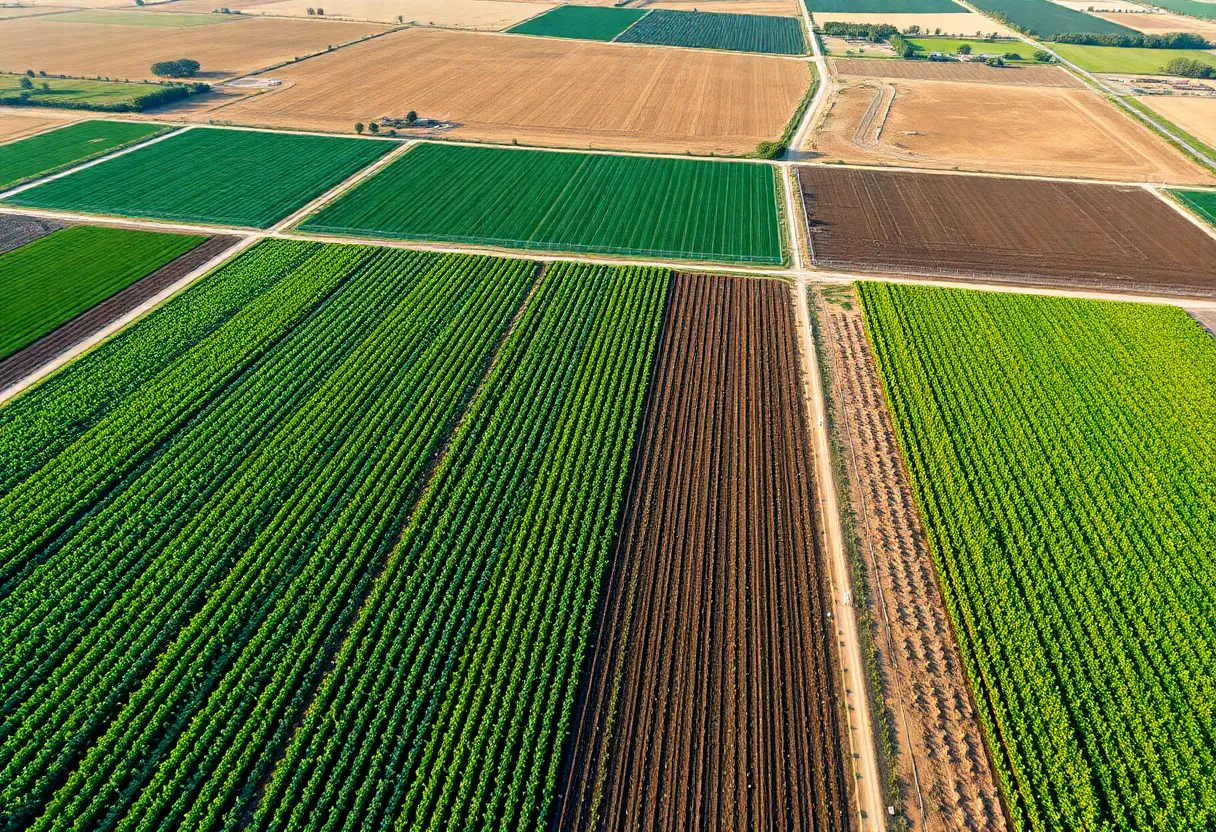California, September 15, 2025
News Summary
California’s agriculture sector, generating about $60 billion annually, is under threat from rising production costs, regulatory challenges, and increasing competition. A recent federal census shows a 20% decline in the number of farmers in the past decade, raising concerns over the industry’s sustainability. Factors like surging costs in lettuce production, trade issues due to tariffs, and shifting political priorities further complicate the landscape. As the agricultural sector struggles to maintain its influence, stakeholders will need to navigate this evolving environment to ensure the industry’s viability and economic contribution.
California Agriculture Faces Decline Amid Rising Costs and Regulatory Challenges
California’s agriculture, the state’s leading industry, generates approximately $60 billion annually. However, this economic giant is facing serious challenges, with indications that its dominance is dwindling in light of competition from sectors like technology and health care. As the state grapples with rising production costs, regulatory hurdles, and shrinking influence, the landscape of its agricultural sector may be on the verge of significant change.
The California Farm Bureau has highlighted alarming trends. The president has noted that the agricultural industry is at a tipping point, with a recent federal census revealing a 20% decline in the number of farmers over the past decade. This loss raises serious concerns about the future viability of the sector, as a shrinking number of producers may struggle to sustain production levels.
Rising Production Costs
A recent study from Cal Poly-San Luis Obispo has focused on the rising production costs for lettuce in the Salinas Valley. The study indicates that costs have surged by 63.7% since 2017, amounting to approximately $1,600 per acre. Contributing factors to these increasing costs include several new regulations that encompass rising labor expenses due to state wage laws, restrictions on well water extraction, and requirements to limit diversion of water from rivers.
Trade Challenges and Competition
Further exacerbating these issues are trade challenges stemming from national policies. This year has seen troubles such as President Donald Trump’s tariffs, which have adversely affected the export of almonds — formerly California’s largest market in China. The Almond Alliance reports a significant decline in shipments, anticipating that China may fall out of the top ten markets for California almonds by the end of the year.
California growers are also facing fierce competition from agricultural producers in states where labor costs are significantly lower. This ongoing competition may result in reductions in farm acreage as operators seek to maintain profitability.
Shifting Political Clout
The diminishing political influence of agriculture is further illustrated by recent government efforts, particularly Governor Gavin Newsom’s push to double subsidies for the film industry. This shift indicates a notable decline in the agricultural sector’s political weight relative to other industries, such as film, which contributes around $30 billion to the state’s economy annually.
The Broader Economic Picture
Overall, California’s economy remains the world’s fourth largest and plays a pivotal role in national job creation and business applications. Despite promising activities in many sectors, there are forecasts suggesting that job growth may be weakening. This situation raises critical questions about the sustainability of California’s agricultural sector amid evolving economic and policy landscapes.
In conclusion, the future of California agriculture faces substantial threats from rising costs, regulatory challenges, and shifting political dynamics. Policymakers and stakeholders in the agricultural community will need to carefully navigate these complexities to ensure the industry’s survival and continued contribution to the state’s economy.
FAQs
1. What is the annual economic contribution of California’s agriculture?
California’s agriculture generates approximately $60 billion annually.
2. How many farmers have left California’s agricultural sector in the past decade?
A federal census indicates a 20% loss of farmers over the past decade.
3. What are the main factors contributing to rising production costs?
Key factors include increased labor costs due to state wage laws, regulations on water use, and overall increased production expenses, particularly notable in sectors like lettuce cultivation.
4. How have tariffs affected California’s almond exports?
Retaliatory tariffs have significantly reduced almond shipments, with projections suggesting that China may soon be outside California’s top ten almond markets.
5. How does agriculture’s economic importance compare to other sectors in California?
While agriculture remains vital, its economic influence is declining compared to industries such as film, which contributes $30 billion to the state economy.
Deeper Dive: News & Info About This Topic
- California Chamber of Commerce
- Times of San Diego
- Fox Business
- Los Angeles Times
- Business Insider
- Wikipedia: Agriculture in California
- Google Search: California agriculture economics
- Google Scholar: California agriculture challenges
- Encyclopedia Britannica: Agriculture
- Google News: California agriculture

Author: STAFF HERE SAN DIEGO WRITER
The SAN DIEGO STAFF WRITER represents the experienced team at HERESanDiego.com, your go-to source for actionable local news and information in San Diego, San Diego County, and beyond. Specializing in "news you can use," we cover essential topics like product reviews for personal and business needs, local business directories, politics, real estate trends, neighborhood insights, and state news affecting the area—with deep expertise drawn from years of dedicated reporting and strong community input, including local press releases and business updates. We deliver top reporting on high-value events such as Comic-Con International, San Diego County Fair, and San Diego Pride Festival. Our coverage extends to key organizations like the San Diego Regional Chamber of Commerce and United Way of San Diego County, plus leading businesses in biotechnology, healthcare, and technology that power the local economy such as Qualcomm, Illumina, and Scripps Health. As part of the broader HERE network, including HEREAnaheim.com, HEREBeverlyHills.com, HERECostaMesa.com, HERECoronado.com, HEREHollywood.com, HEREHuntingtonBeach.com, HERELongBeach.com, HERELosAngeles.com, HEREMissionViejo.com, and HERESantaAna.com, we provide comprehensive, credible insights into California's dynamic landscape.





